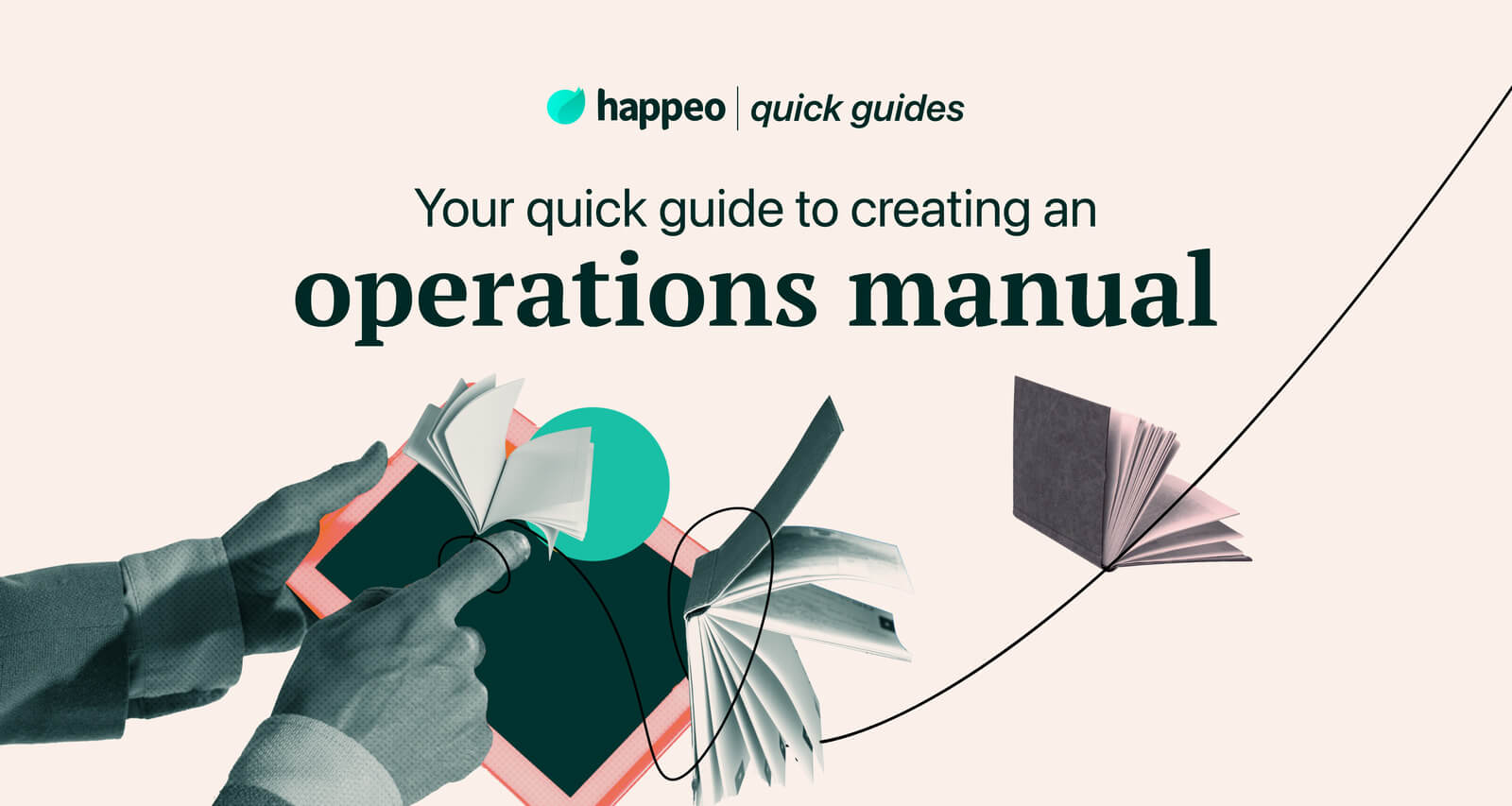
Quick guides
Your quick guide to creating an employee handbook [incl. template]
![Your quick guide to creating an employee handbook [incl. template]](https://www.happeo.com/hubfs/Happeo-Website-Assets/New/blog/Blog_88367532435_featured.jpg)
6 mins read
Start building your digital home with Happeo
Request a demoQuick guides
Product
Features
Solutions
Happeo for
Use cases
Resources
Explore
Support
Happeo For
Use cases
Comparisons
Explore
Support
Recent

Jonathan Davies
6 mins read
Think of an employee handbook as an instruction manual for working at your company. Its main goal is to help new employees get settled into their new job, and gain a solid understanding of your organization.
An employee handbook can take many forms, but it’s most commonly used to communicate an organization’s mission, vision and values, as well as guidelines on company policies, rules, and expectations. It can also include details about company benefits, compensation, vacation policies, and safety regulations.
An employee handbook should be an essential component of a new hire’s onboarding as it helps employees understand what is expected of them and what they can expect from the company.
Creating an employee handbook is hugely beneficial to both your HR team and your employees. Here are some reasons why:Want to update an existing employee handbook? Or create a new one from scratch? We’ve got you covered.
The following template is based on our employee handbook at Happeo, which includes sections on employee onboarding, learning and development opportunities, employee benefits, and much more.
Go ahead and use this template as the foundation for your employee handbook, and make sure to adjust the sections to the specifics of your organization. Feel free to make it your own!
During the onboarding process, a new hire goes through a series of measures to get acquainted with the team, and learn more about the organization, its structure, culture, and values. Including a section for onboarding in your handbook can help to prepare your new employee for their first few weeks on the job. Consider including the following sections:
You can also think of your employee handbook as a reference guide or ‘FAQ’ for new employees. That’s why it’s a good idea to include a section with all the important practical details a new employee will need to know, including:
Here’s an example WFH tip from the Happeo employee handbook:
👨💻 Maintain a work-life balance
When we work from home, the lines between job and home life can become blurry. That’s why it helps to set space boundaries, including having a separate workspace with its own door, if possible. We encourage you to establish time boundaries in the form of a daily work schedule, such as closing your laptop at 17:30. It’s really important to mentally detach from work and focus on relaxation at the end of a workday.
Use this section to offer advice on how to stay happy and healthy while at work. Below is an excerpt from the employee wellbeing section taken directly from the Happeo employee handbook:
“Sometimes, when working passionately and persistently, we forget to take care of our bodies and minds. However, to stay healthy, happy and productive, we need to take care of ourselves throughout the day! Here are some tips to help you do so:
Take breaks 🌞
It's sometimes hard to stop what you’re working on and take a break, but remember that small regular breaks make work more fun and can improve your work results. You can use tools like BreakTimer to remind you to take a break.
Taking regular breaks is not just allowed, it’s encouraged! Because we believe that at the end of the day, you’ll have been fresher, in a better mood, and therefore more productive.”
Does your organization offer learning and development opportunities to employees? If so, it’s a good idea to show how much you value the growth of your people by listing the L&D opportunities available. You could include the L&D budget and list any partnerships with educational institutions or online learning platforms.
Including a behavioral policy in your employee handbook is important to ensure that all employees are aware of the expectations that your workplace has for behavior—helping to create a positive and safe work environment.
A behavioral policy generally includes guidelines covering:
Detailing your holiday and sick leave policy in your employee handbook is essential for providing employees with the information they need regarding taking time off from work.
Not only does it show your employees that you value their health and wellbeing, it encourages them to take breaks to refresh and recharge. Make sure to include the procedure for requesting holiday days or sick leave.
Who doesn’t love the ‘perks of the job’? In fact, employee benefits are probably one of the reasons why a new hire decided to join your company. Perks can include anything from extra vacation days, gift cards, access to special events, free or discounted services, or even flexible working hours.
Also consider including the following information:
If you hire talent from overseas, having a relocation section can be really helpful. Moving to a new country is just as daunting as it is exciting, so giving new employees all the information they need to settle into a new country is a nice touch.
You could provide a guide with tips on housing, how to set up a bank account, how the healthcare system works, where to sign up for language classes, as well as information on local expat meetups.
If your organization offers a referral program, including it in your employee handbook is a great way to give your team a little extra motivation. You can encourage your employees to help you find perfect candidates for open positions by listing the referral bonus or other incentives offered if their referral succeeds.
Even though your staff will receive the employee handbook when they join your company, it’s still important to communicate the employee offboarding process. This might include information on the notice period (which may differ per country), how to communicate your departure, how to delegate responsibilities, and how to fulfil HR requirements such as returning office equipment.
You can create your very own employee handbook in Happeo. With Happeo’s Page Templates you can choose from a selection of ready-made templates, apply your own branding, add your content, and deploy it in a matter of minutes. You can also create your own custom template without needing to code, just drag and drop the sections you need.
